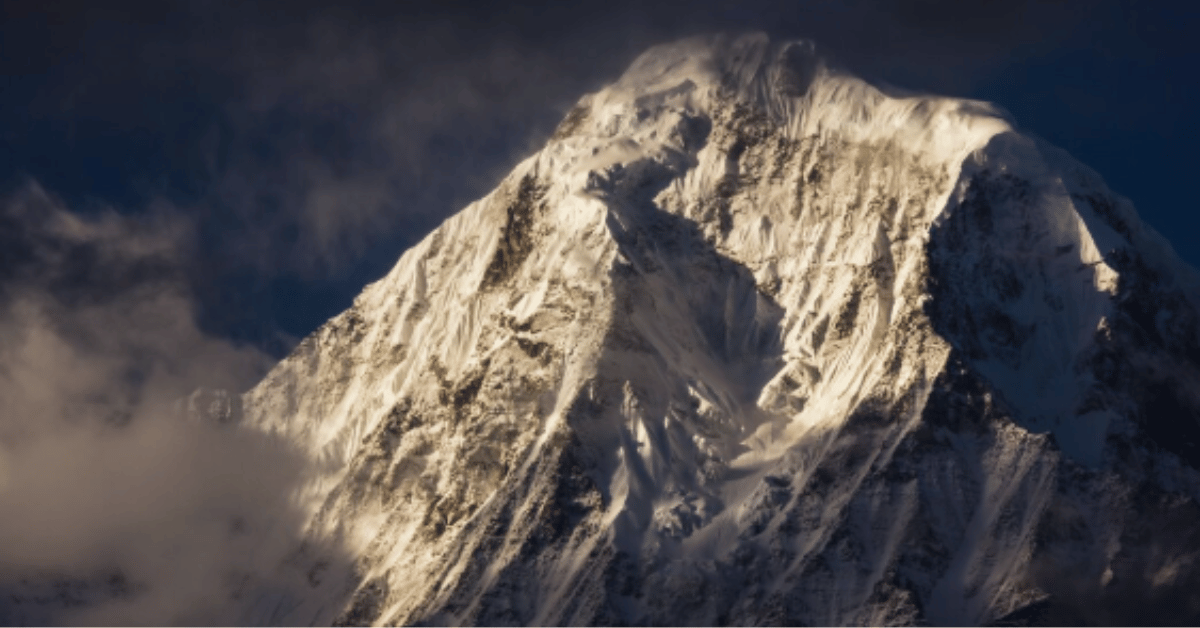The North Face of Everest has always stood as a daunting symbol of ambition, courage, and human endurance. Unlike the more frequently traversed southern route from Nepal, the northern approach from Tibet is steeper, colder, and less forgiving. Searchers for knowledge often wonder: why do climbers choose the North Face of Everest despite its notorious danger? The answer lies in its legacy, its raw beauty, and the sense of authenticity it offers compared to the crowded southern route. Within its icy ridges and weather-beaten cliffs lie stories of triumph and tragedy, human resilience, and the eternal draw of the unknown. For anyone interested in understanding the Everest experience, examining the North Face is essential, as it is here where climbing truly meets its ultimate test.
The introduction of the North Face into global mountaineering came in the 1920s, when British expeditions first attempted Everest through Tibet. The world was enthralled with the mystery of the mountain, then thought nearly unconquerable. Unlike the southern approach, which gained prominence only after Nepal opened its borders in the 1950s, the northern side carried an aura of first attempts, pioneering spirit, and unresolved mysteries such as the fate of George Mallory and Andrew Irvine in 1924. The North Face therefore represents not just a physical challenge but also a cultural landmark in mountaineering history. Climbers often describe it as Everest in its purest form, unmarred by heavy tourism and crowded base camps. Understanding this side of Everest offers insight not just into mountaineering, but also into human determination and the unrelenting power of nature.
The Geographic Profile of the North Face
The North Face of Everest rises from the high plains of Tibet, where altitude alone challenges human survival. At 5,150 meters (16,900 feet), the North Base Camp already places climbers in an environment where oxygen levels are significantly reduced. From there, the route climbs sharply toward the East Rongbuk Glacier before splitting into advanced camps that snake toward the North Col and beyond. Climbers who attempt this side face harsher winds, greater exposure, and significantly colder temperatures compared to the southern flank. Geography dictates the experience: whereas the southern approach includes gradual ascents and wider valleys, the northern path is abrupt and exposed, with cliffs that reveal little mercy. The natural design of this side gives rise to the reputation of being “Everest’s stern teacher.”
Historical Expeditions on the North Face
The earliest recorded expeditions from the North Face occurred during the British reconnaissance attempts of the 1920s and 1930s. George Mallory’s now-legendary climb in 1924 ended in disappearance, sparking debates that endure today about whether he may have reached the summit before perishing. In the decades following, numerous attempts were made but none could overcome the difficulties of the upper pyramid of Everest via the North Ridge. It was not until 1960 that a Chinese team claimed the first successful ascent from the North, though international skepticism remained due to limited documentation. By the 1980s, as climbing permits in Tibet expanded, more foreign teams began exploring this route again. These expeditions revitalized the narrative of the North Face, highlighting both its dangers and its unmatched sense of authenticity in climbing lore.
Comparing the North and South Routes
For modern climbers, the decision between the north and south routes is not merely geographical but philosophical. The southern route, made famous by Sir Edmund Hillary and Tenzing Norgay in 1953, offers slightly easier access, more commercial support, and a longer history of successful summits. The North Face, by contrast, remains less trafficked and often considered more technical. Wind speeds on the northern ridge can exceed 200 kilometers per hour, and the exposure leaves climbers vulnerable to frostbite within minutes. Yet, many still prefer it for its solitude, its connection to the early expeditions, and its absence of the traffic jams sometimes seen on the southern side. Choosing the North Face is often a statement: one seeks not just the summit, but the unfiltered Everest experience.
Table 1: Key Comparisons Between North Face and South Face of Everest
| Feature | North Face (Tibet) | South Face (Nepal) |
|---|---|---|
| First Major Use | 1920s British expeditions | 1953 Hillary-Norgay summit |
| Base Camp Altitude | 5,150 meters (16,900 feet) | 5,364 meters (17,598 feet) |
| Climate Conditions | Colder, windier, drier | Warmer, more humid |
| Technical Difficulty | Higher, more exposed | Moderate, more gradual ascents |
| Popularity | Less trafficked, niche | More commercial, widely used |
| Notable Challenges | High winds, steep pyramid, frostbite risk | Icefall dangers, overcrowding |
The Psychological Challenge of the North Face
Climbing Everest is as much a mental journey as it is a physical one, and nowhere is this more apparent than on the North Face. The sight of endless cliffs, the echoing winds, and the isolation create a psychological landscape that few climbers can endure without intense preparation. Unlike the south, where camaraderie among climbers in crowded camps can lighten spirits, the northern ascent is quieter, lonelier, and more meditative. Climbers often report vivid reflections about mortality and purpose, describing moments of clarity and despair within hours of each other. As one climber put it, “The North Face does not ask for your strength alone, it asks for your soul.” The harshness of this environment is precisely what fuels its mystique, creating stories that become legends among mountaineers.
The Role of Tibetan Culture and Local Support
An often overlooked dimension of the North Face is the Tibetan cultural and spiritual backdrop against which climbing occurs. Unlike the Nepali side, where Sherpas have historically played an integral role in expeditions, Tibetan nomads and guides offer different forms of support, blending ancient cultural traditions with practical mountain knowledge. Climbers frequently encounter monasteries, prayer flags, and local rituals that infuse the ascent with spiritual resonance. The belief in the mountain as sacred also affects how local communities view climbers: as individuals engaging not merely in sport but in a kind of pilgrimage. This interplay of human spirituality and natural grandeur lends the North Face a unique identity that distinguishes it from the more commercialized southern path.
Environmental and Climatic Factors
The North Face is also a stark reminder of environmental fragility. Winds sweep across the Tibetan plateau with such force that snow seldom accumulates deeply, leaving bare rock and treacherous ice exposed. Climate change has further altered the conditions: glaciers retreat more rapidly, crevasses open unpredictably, and storms intensify without warning. For climbers, this means that historical knowledge of routes must be continuously updated, and adaptability becomes essential. Unlike the southern side, which benefits from more infrastructure and route maintenance, the northern side remains raw, shifting with the elements. It represents not only a personal challenge but also an evolving frontier in understanding how climate impacts the highest environments on Earth.
Table 2: Environmental Challenges of the North Face
| Environmental Factor | Impact on Climbers | Long-Term Concerns |
|---|---|---|
| High Winds | Increased frostbite risk, exposure | Weather unpredictability |
| Low Temperatures | Slower acclimatization, physical strain | Potential impact on survival rates |
| Glacier Retreat | Unstable routes, hidden crevasses | Permanent changes in climbing paths |
| Thin Oxygen | Higher reliance on supplemental O₂ | Health risks and fatalities |
| Limited Infrastructure | Less rescue and support options | Restricts accessibility to elite climbers |
Modern Expeditions and Ethics
In recent decades, the North Face has seen a new wave of climbers who prioritize ethics, sustainability, and reduced environmental footprint. Unlike the south, where trash and overcrowding have sparked concerns, the northern side enforces stricter regulations on expedition sizes and environmental impact. Climbers are increasingly expected to carry out waste, minimize carbon emissions, and engage with local communities respectfully. This aligns with a broader trend in mountaineering, where the focus is shifting from conquering mountains to coexisting with them. Modern climbers recognize that Everest, especially its northern face, is less a trophy to be won than a shared heritage to be preserved.
Conclusion: The Timeless Allure of the North Face
The North Face of Everest is not simply a path to the summit; it is an encounter with nature in its most uncompromising form. Its history is written with both triumph and tragedy, its geography challenges the limits of human endurance, and its cultural backdrop deepens the journey beyond sport. For many climbers, the North Face remains the ultimate test of purity in mountaineering—less commercialized, less forgiving, yet infinitely rewarding. As one seasoned climber observed, “Everest’s South Side is the world’s highest ladder, but the North Face is its highest mirror.” The route does not merely lead upward; it reflects the climber’s deepest resilience, ambition, and vulnerability. In exploring this side of Everest, one comes to understand not just the mountain, but also the enduring spirit of human aspiration.
FAQs
Q1: Why is the North Face of Everest considered more difficult than the South Face?
The North Face is steeper, colder, and windier, with fewer support facilities compared to the South. Climbers face harsher exposure, faster weather changes, and longer technical sections. Unlike the southern route, which benefits from ladders and fixed ropes in the Khumbu Icefall, the northern approach demands more independent skill and resilience.
Q2: What is the altitude of the North Base Camp on Everest?
The North Base Camp in Tibet sits at around 5,150 meters (16,900 feet). This altitude already reduces oxygen levels by nearly half compared to sea level, meaning climbers must acclimatize early and carefully before pushing upward.
Q3: Who first successfully climbed Everest from the North Face?
A Chinese team is credited with the first ascent from the North Face in 1960. Though the climb was controversial due to limited evidence at the time, it paved the way for future expeditions that solidified the northern route as a legitimate, albeit extremely demanding, path to the summit.
Q4: What are the main dangers of climbing the North Face?
The primary dangers include severe winds exceeding 200 km/h, extreme cold, frostbite, thin oxygen levels, and unstable glaciers. The steep final pyramid section above 8,000 meters adds additional technical risk, with minimal room for error. Rescue options are limited, making self-sufficiency vital.
Q5: Can inexperienced climbers attempt the North Face of Everest?
Generally, no. The North Face requires advanced mountaineering skills, high-altitude experience, and strong psychological resilience. It is not suited for novice climbers or even moderately experienced mountaineers without prior 8,000-meter climbs. Most expeditions restrict access to seasoned climbers due to its technical difficulty.











